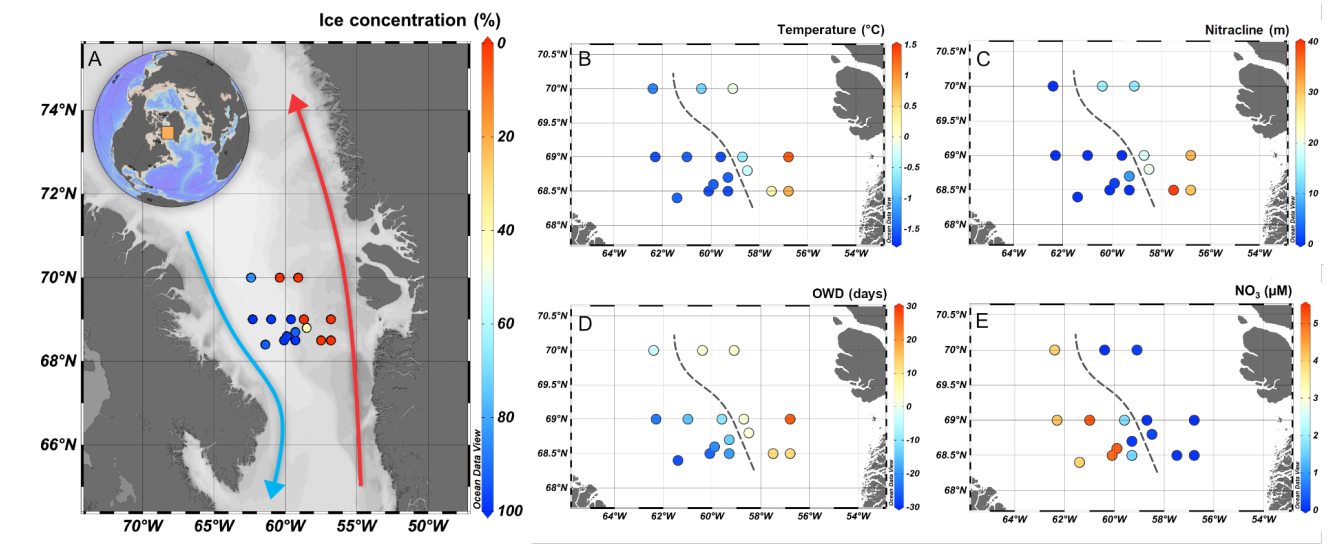 The Amundsen cruise in Baffin Bay (2016)
The Amundsen cruise in Baffin Bay (2016)
Arctic phytoplankton spring bloom diversity across the marginal ice zone in Baffin Bay
Abstract
Phytoplankton under-ice blooms have been recently recognized as an important Arctic phenomenon for global primary production and biogeochemical cycling. Drastic sea-ice decline enables the development of early blooms, sometimes hundreds of kilometers beneath the pack ice. Baffin Bay is a semi-enclosed sea where Arctic and North Atlantic water masses interact. In the present work, we investigated the phytoplankton community structure across the marginal ice zone between the ice-free, Atlantic-influenced, east and the ice-covered, Arctic-influenced, west Baffin Bay using 18S rRNA high-throughput amplicon sequencing, and numerous environmental and biological data collected in the scope of the Green Edge project. Sampling was performed during June-July 2016 in a total of 16 stations with around 6 depths each. Stations were clustered into ″Under Ice″ (UI), ″Marginal Ice Zone″ (MIZ), and ″Open Water″ (OW) on the basis of its sea-ice cover upon sampling. The UI sector was characterized by a shallow nitracline, high pico-phytoplankton abundance, and a shared dominance between Micromonas and Phaeocystis in the 0.2-3 μm size fraction. Several amplicon sequence variants (ASVs) were flagged as indicators for the UI+MIZ sector group, including known ice-associated taxa such as the diatoms Melosira arctica and Pseudo-nitzschia seriata, but also specific ASVs assigned to the green alga Micromonas polaris, the cryptophyte Falcomonas daucoides, and a Pterosperma sp. rarely seen in other metabarcoding datasets, including from the Arctic. The OW sector harbored a community adapted to a nutrient-depleted/high light environment, with a significant contribution of the haptophyte Phaeocystis pouchetii and big centric diatoms, including several Thalassiosira species.